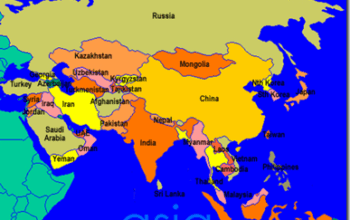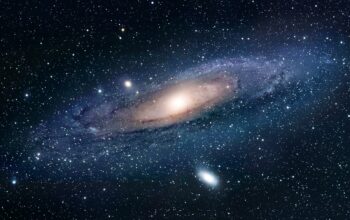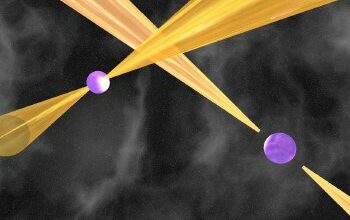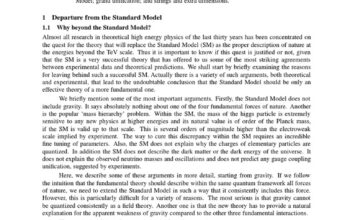The cosmos is a vast and intricate tapestry, interwoven with celestial phenomena that provoke awe and wonder. Among these phenomena, black holes stand as some of the most enigmatic entities, predominantly characterized by their immense gravitational pull that can warp the fabric of space-time itself. While it is widely accepted that supermassive black holes reside at the centers of large galaxies, the existence of gargantuan black holes nestled within dwarf galaxies introduces an intriguing conundrum. How can such titanic entities exist in relatively diminutive galactic environments?
A dwarf galaxy, by definition, is a small galaxy composed of up to a billion stars, significantly fewer than the wealthier realms of larger galaxies. These cosmological enclaves are often characterized by their low luminosity and limited gas supply, raising a compelling question: how does a black hole, potentially millions to billions of times the mass of our Sun, coalesce within such a modest setting? This inquiry invites us to explore the processes that lead to the formation and evolution of gargantuan black holes in dwarf galaxies and the implications of such discoveries on our understanding of cosmic evolution.
The formation of black holes generally occurs through two primary pathways: the collapse of massive stars at the end of stellar life cycles or the merger of primordial black holes. In the case of dwarf galaxies, the former option seems less probable. Massive stars, which are capable of ending their lives in supernovae to leave behind stellar-mass or supermassive black holes, are comparatively rare in dwarf galaxies due to their scant resources and lower metallicity. Hence, the alternative mechanism—primordial black hole formation—introduces unique considerations. Primordial black holes may have formed in the high-density regions shortly after the Big Bang and subsequently attracted surrounding matter, facilitating the growth of a gargantuan black hole over cosmic time.
Moreover, an intriguing hypothesis suggests that the dynamics of mergers among dwarf galaxies may play a pivotal role in black hole evolution. Dwarf galaxies frequently experience interactions with one another, resulting in gravitational disturbances that can lead to the merging of their dark matter halos. As these galaxies coalesce, gas and stellar material can be funneled toward a central region, effectively reducing angular momentum and allowing gas to accumulate and cool. This process not only promotes star formation but might also create conducive conditions for the growth of supermassive black holes.
Examinations of dwarf galaxies exhibiting active galactic nucleus (AGN) signatures provide observable evidence of gargantuan black holes. These galaxies, often referred to as “active dwarf galaxies,” demonstrate heightened luminosities, suggesting the presence of accreting supermassive black holes. Observations of the nearby dwarf galaxy known as NGC 4395, which possesses a black hole with an estimated mass of approximately 100,000 solar masses, exemplify this phenomenon. Such findings illustrate the complexity of dwarf galaxy environments and reinforce the notion that these seemingly inconspicuous galaxies can harbor remarkably massive black holes.
As researchers continue their quest to understand the presence of gargantuan black holes in dwarf galaxies, they encounter numerous challenges. One prominent difficulty lies in the detection and characterization of such black holes. Given the relatively low luminosity of dwarf galaxies, the black holes residing within them often evade conventional observation techniques. This necessitates innovative methodologies, such as utilizing gravitational wave detectors that can identify mergers between black holes across the cosmic landscape, or employing advanced spectroscopic analyses to discern the dynamics of gas inflow around these cosmic titans.
In addition, the implications of gargantuan black holes residing within dwarf galaxies extend far beyond their immediate environments. Their existence may shed light on the formation and evolution of the cosmos at large. For instance, the early universe was comprised of numerous dwarf galaxies; understanding how these black holes interacted with one another could provide pivotal insights into the assembly processes underlying larger galactic structures. Furthermore, the presence of massive black holes in relatively isolated dwarf galaxies challenges the traditional notions of hierarchical galaxy formation and necessitates a reassessment of the role these smaller galaxies play in the grand cosmic narrative.
The exploration of gargantuan black holes within dwarf galaxies presents physicists and astronomers alike with myriad questions and challenges. Is it conceivable that these black holes might evolve in isolation, far removed from the gravitational grips of larger galactic clusters? What influence do they exert on their galactic environments, particularly in terms of star formation rates and the distribution of dark matter? Can these black holes exhibit peculiar growth patterns, diverging from their more massive counterparts in larger galaxies?
The answers to these queries may not be straightforward, nor are they readily accessible. The quest to unravel the mysteries of gargantuan black holes within dwarf galaxies is emblematic of the broader search for understanding the complexities of our universe. It underscores the significance of interdisciplinary approaches, bridging cosmology, astrophysics, and observational astronomy, to reveal the hidden narratives written in the stars and the enigmatic behavior of the universe at its grandest scales.
Ultimately, this tapestry of inquiry, inspired by the presence of gargantuan black holes in dwarf galaxies, invites both scholarly engagement and public enthusiasm. It not only enhances our comprehension of individual galaxies but also deepens our insight into the evolution of the cosmos itself, potentially redefining the very nature of galactic interactions and structures. As researchers continue to plumb the depths of space, they remain poised at the frontier of scientific discovery, ready to confront the unknown and illuminate the intricacies of our universe.

